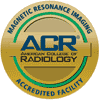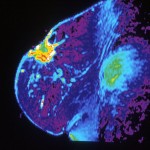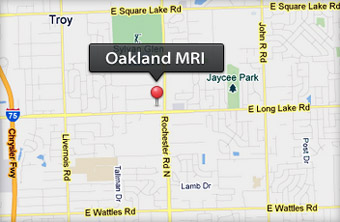 What is the role of MRI in both diagnosing multiple sclerosis and following the course of the disease? That’s the question we posed to two prominent MS specialists: John Corboy, MD, of the University of Colorado in Denver, and Jerry S. Wolinsky, MD, of the University of Texas Health Science Center in Houston. They agreed that this imaging method has revolutionized the management of MS, both at onset and during its subsequent progression.
What is the role of MRI in both diagnosing multiple sclerosis and following the course of the disease? That’s the question we posed to two prominent MS specialists: John Corboy, MD, of the University of Colorado in Denver, and Jerry S. Wolinsky, MD, of the University of Texas Health Science Center in Houston. They agreed that this imaging method has revolutionized the management of MS, both at onset and during its subsequent progression.
Role of MRI in Multiple Sclerosis: update
Breast MRI: More Diagnostic Accuracy
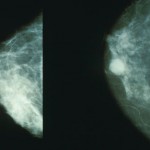 An MRI screening protocol for breast cancer that takes just 3 minutes is as good as a regular MRI that takes 21 minutes, and more accurate than digital mammography, according to a proof-of-concept study published in the August 1 issue of the Journal of Clinical Oncology.
An MRI screening protocol for breast cancer that takes just 3 minutes is as good as a regular MRI that takes 21 minutes, and more accurate than digital mammography, according to a proof-of-concept study published in the August 1 issue of the Journal of Clinical Oncology.
The accelerated MRI was as good as regular MRI for detecting 11 invasive breast cancers that had escaped detection on regular mammography, report Christiane A. Kuhl, MD, and colleagues from the University Hospital of Aachen in Bonn, Germany.
“MRI is the technique of the future [for screening]. Ionizing radiation is not involved. Compared with digital mammography, it is highly sensitive, and overdiagnosis is less of a problem, contrary to current notions,” Dr. Kuhl told Medscape Medical News.
Annual St. Vincent dePaul Golf Outing At Pine Lake Country Club, June 23, 2014
Early Detection of Breast Cancer using MRI
 For certain women at high risk for breast cancer, screening magnetic resonance imaging (MRI) is recommended along with a yearly mammogram. MRI is not generally recommended as a screening tool by itself, because although it is a sensitive test, it may still miss some cancers that mammograms would detect. MRI may also be used in other situations, such as to better examine suspicious areas found by a mammogram. MRI can also be used in women who have already been diagnosed with breast cancer to better determine the actual size of the cancer and to look for any other cancers in the breast.
For certain women at high risk for breast cancer, screening magnetic resonance imaging (MRI) is recommended along with a yearly mammogram. MRI is not generally recommended as a screening tool by itself, because although it is a sensitive test, it may still miss some cancers that mammograms would detect. MRI may also be used in other situations, such as to better examine suspicious areas found by a mammogram. MRI can also be used in women who have already been diagnosed with breast cancer to better determine the actual size of the cancer and to look for any other cancers in the breast.
Magnetic resonance imaging
MRI scans use magnets and radio waves instead of x-rays to produce very detailed, cross-sectional images of the body. The most useful MRI exams for breast imaging use a contrast material (called gadolinium) that is injected into a catheter in a vein (IV) in the arm before or during the exam. This improves the ability of the MRI to clearly show breast tissue details.
MRI plus Mammogram found the best for high risk women
 For the best chance at spotting breast cancer early, women at high risk need frequent MRI screenings along with mammograms, a large Canadian study contends.
For the best chance at spotting breast cancer early, women at high risk need frequent MRI screenings along with mammograms, a large Canadian study contends.
Mammograms alone failed to detect the early cancers in a study of more than 2,000 high-risk women, according to the findings.
“What my study is showing is that high-risk women should be screened earlier, beginning at the age of 30,” said study researcher Anna Chiarelli, a senior scientist at Cancer Care Ontario. “They should be screened often — every year — and they should be screened with both a breast MRI and a mammogram every year.”
Chiarelli and her colleagues followed 2,207 women, aged 30 to 69, all at high risk of breast cancer, to determine the effect of the two screenings. The women were enrolled in the Ontario Breast Screening Program, which expanded in July 2011 to screen high-risk women in a special program that uses both tests — MRI and digital mammography.
BRCA1 and BRCA2: Cancer Risk and Genetic Testing
BRCA1 and BRCA2 are human genes that produce tumor suppressor proteins. These proteins help repair damaged DNA and, therefore, play a role in ensuring the stability of the cell’s genetic material. When either of these genes is mutated, or altered, such that its protein product is not made or does not function correctly, DNA damage may not be repaired properly.
As a result, cells are more likely to develop additional genetic alterations that can lead to cancer. Specific inherited mutations in BRCA1 and BRCA2 increase the risk of female breast and ovarian cancers, and they have been associated with increased risks of several additional types of cancer. Together, BRCA1 and BRCA2 mutations account for about 20% to 25% of hereditary breast cancers1 and about 5% to 10% of all breast cancers.2 In addition, mutations in BRCA1 and BRCA2 account for around 15% of ovarian cancers overall.3
Breast cancers associated with BRCA1 and BRCA2 mutations tend to develop at younger ages than sporadic breast cancers. A harmful BRCA1 or BRCA2 mutation can be inherited from a person’s mother or father. Each child of a parent who carries a mutation in one of these genes has a 50% chance of inheriting the mutation. The effects of mutations in BRCA1 and BRCA2 are seen even when a person’s second copy of the gene is normal.
Breast MRIs not always used appropriately
 The percentage of women undergoing magnetic resonance imaging (MRI) exams of the breast has increased in recent years, but often, the women who could benefit the most from the procedure aren’t the ones getting it, new research suggests.
The percentage of women undergoing magnetic resonance imaging (MRI) exams of the breast has increased in recent years, but often, the women who could benefit the most from the procedure aren’t the ones getting it, new research suggests.
Breast MRIs are recommended as a way to screen for breast cancer in women at high risk for the disease (those whose lifetime breast cancer risk is greater than 20 percent), in conjunction with yearly mammograms. MRIs are also used to diagnose breast cancer, but this is not recommended, particularly before a biopsy is performed.
Midnight Golf event at Bloomfield Hills Country Club
2nd Annual Midnight Golf Program at Bloomfield Hills Country Club
[pwaplusphp album=”MidnightGolfEventAtBHCC2013″]Full Body MRI in less than 10 minutes
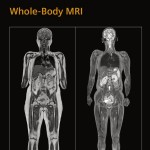 This screening protocol fully utilizes the new Tim technology in order to effectively cover the whole body in less than 10 minutes. Key features include the use of the high-SNR array coils, the Matrix coils, and multiple receiver channels that allow iPAT accelerated sequences. The coils themselves are physically compatible so they may all be placed on the patient and plugged in to the table simultaneously at the beginning of the exam, eliminating the need for coil or patient repositioning. Automatic table motion combined with the physical compatibility allows for rapid transition between anatomical regions.
This screening protocol fully utilizes the new Tim technology in order to effectively cover the whole body in less than 10 minutes. Key features include the use of the high-SNR array coils, the Matrix coils, and multiple receiver channels that allow iPAT accelerated sequences. The coils themselves are physically compatible so they may all be placed on the patient and plugged in to the table simultaneously at the beginning of the exam, eliminating the need for coil or patient repositioning. Automatic table motion combined with the physical compatibility allows for rapid transition between anatomical regions.
The sequences used have been demonstrated to be highly effective at detecting systemic metastases as well as a wide variety of other disease processes. In addition, the 3D VIBE can be reformatted in other orientations, particularly when the resolution is near-isotropic. This allows one breath-hold sequence to replace up to three without any loss of information. The short duration of this screening exam makes it a reasonable replacement for similar whole-body screening exams performed under CT. In addition this approach offers both improved safety (radiation and contrast agents) and diagnostic image quality in all regions except possibly in the lungs.
Oakland MRI at Hour Detroit’s Best of Detroit Party Presented by Cadillac 2013
Hour Detroit’s Best of Detroit Party Presented by Cadillac celebrated the superheroes of the Motor City featured in the comic book inspired Best of Detroit issue.
